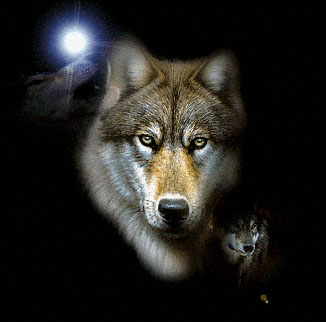Thursday, June 29, 2006
Silverwolf's Blog
You can find it here: http://www.flickr.com/photos/47733744@N00/.
Most of my time is spent updating the Tir Na mBeo website. More ogham details have been entered and an article on celtic history.
See more here: http://silverwolf.batcave.net.
Slán
Wednesday, June 28, 2006
Tir Na mBeo : The Celts
Still, it is looking good - I only hope people enjoy it and find it useful.
Tir Na mBeo : The Celts
Slán
Monday, June 26, 2006
Tir Na mBeo : Ogham : Associations
A new article has been added to our Research site, Tir Na mBeo, about the traditional associations of the Ogham letters.
This article describes the traditional associations with the Ogham staves. Assocations are a way of linking the Ogham symbols with other symbols. These symbol links are necessary to a diviner or one using them as part of a magical system. A linked symbol allows the mind to tread pathways that may not have been foreseen or expected. The psychic faculty is extended in such a search and the mind open to influence by the fey.
The full lists can be found here.
Tir Na mBeo : Ogham : Associations
Slán
Sunday, June 25, 2006
The 'Batcave' has been updated
Site search facilities, privacy policy and contact us pages have also been added.
Enjoy the site.
Slán
Silverwolf
Wednesday, June 21, 2006
Celtic Shamanism?
I have hoped to accomplish three things in this article. The first is to
show that 'shamanism' is not a religion, but rather a technical term used to
denote a well-defined set of practices and mythology. Furthermore, it is my hope
that I have shown that these practices are but components found within a greater
cultural milieu. Without the context of the culture those practices themselves
have no purpose, no understanding, no focus. Lastly, I hope that I have shown
that we of Gaelic culture do not have to rely on such a vague and misleading
title as 'shaman'. To the contrary, each skill and art has a name that holds an
understanding, power and full body of knowledge that is its own. These jobs
were/are fully empowered by the understandings of their culture. These are what
we call those who have done special things in our culture. We have no shamans,
and our religion is not 'shamanism'.
The article is well worth a read, and the references at the end cry out to be pursued.
Clannada na Gadelica - Gaelic Traditionalist Resource Site
Slán
Tuesday, June 20, 2006
Phosphenes and Entoptic Images
I encountered the following paragraph in Pennick's book about Alphabets when doing some background reading for Ogham study.
Historically, it was from the Phoenician script that Greek originated. But modern research on human perception may provide us with another possibility, one embedded deep within our own human consciousness. Modern neurophysiology has identified phosphenes, geometrical shapes and images that are present subconsciously in the visual cortex and neural system. These are present in all humans: they are described as entopic (sic), being visible when the eyes are shut. They can also be seen when the consciousness is altered by some means: during meditation, in trance, or in hallucinations induced by fatigue, illness or drugs. Geometric shapes related to letters are often perceived in the early stages of trance.
These states of consciousness are the domain of the shaman, the human who treads the thin line between life and death in her or her quest for enlightenment.
--- p.5, "The Secret Lore of Runes and other Ancient
Alphabets", Nigel Pennick, Rider, 1991. ISBN: 0-7126-3963-2 Go to Amazon
If this is true, then it is possible that the origins of script lie in internal perception rather than in an arbitrary construction of a symbol system (alphabet) used to describe pictorially or phonically.
I did some resesarch on this and the results can be found here: http://silverwolf.batcave.net/Ogham/Phosphenes.html.
Fascinating stuff!
Slán
Saturday, June 17, 2006
New Blog
How does it look? What sort of features can I find here that might be of interest to readers? Dunno.....
These and many other questions to be answered later..
Slán
